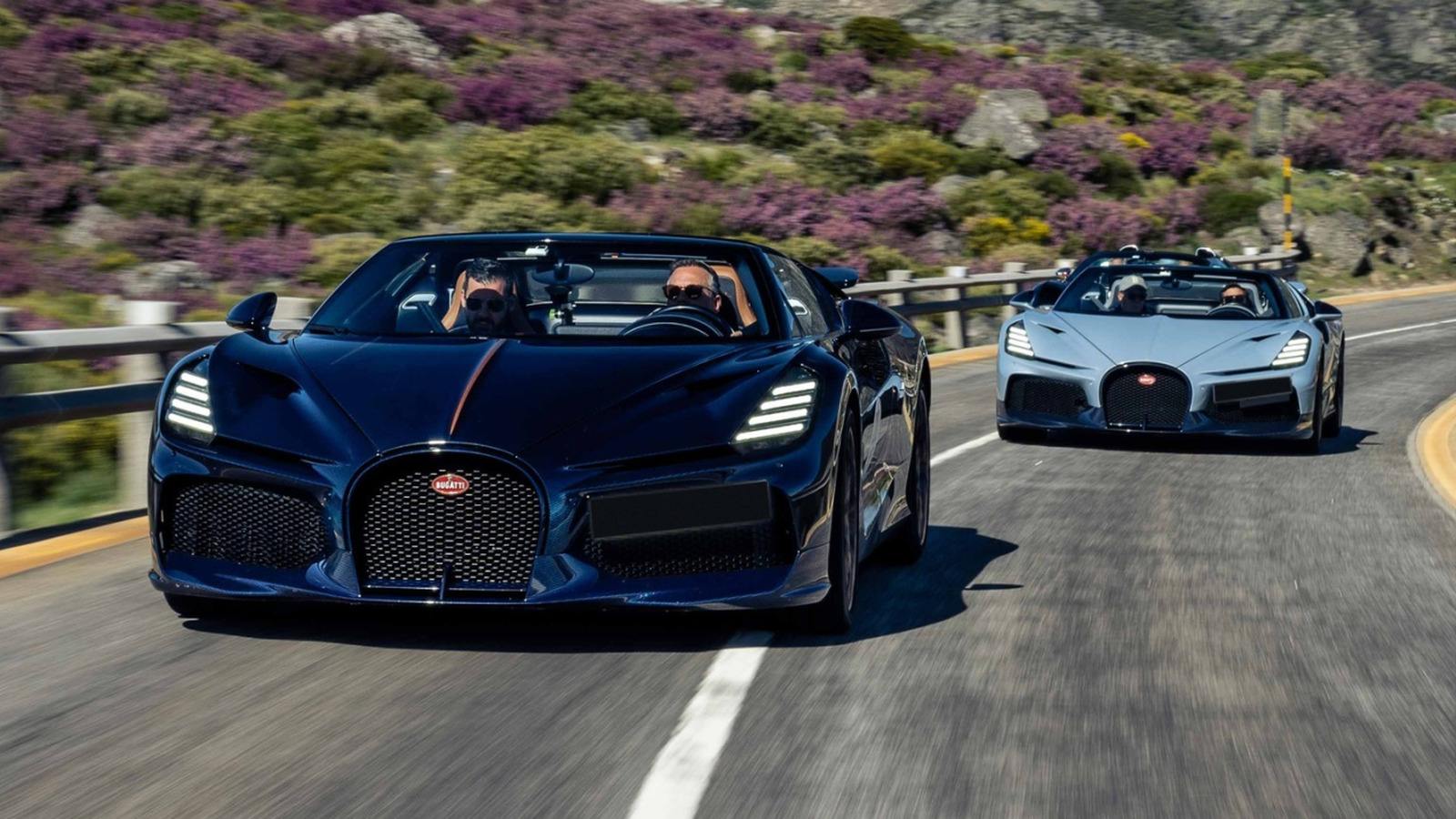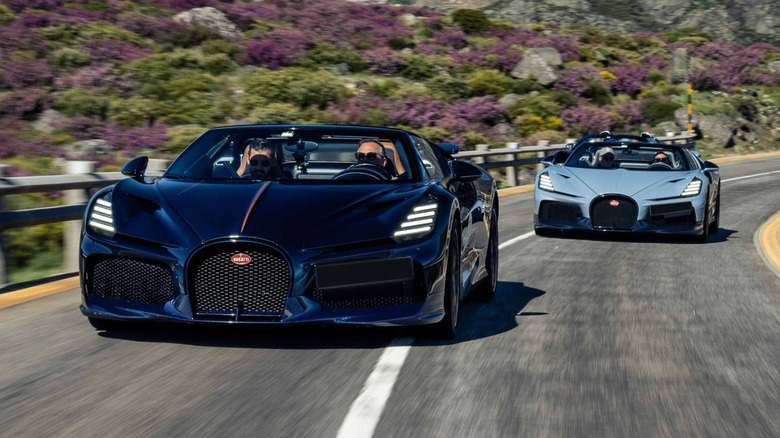Sure, adding turbochargers to an engine can make a car more efficient and a lot faster and more powerful, but one of the biggest reasons people like turbocharged cars are the noises they make. Specifically, we love the sounds of a turbocharger spooling up under acceleration, and the whoosh of the blow-off valve releasing pressure when you let off the accelerator. It can be an intoxicating combination of sounds, seemingly egging you on to push harder and harder, and typically the louder the turbo noises, the faster the car is. (Or, at least, that’s what people who modify their cars to enhance the sounds want you to think.)
When it comes to what production car makes the best — and loudest — turbo noises, it’s not even close. The answer is the Bugatti W16 Mistral, which also happens to be the fastest convertible in the world with a top speed of 282 mph. Last week Bugatti held its annual Grand Tour, where modern Bugatti owners road trip their cars across typically gorgeous routes, this year in Portugal, and company CEO Mate Rimac tagged along in a Mistral, one of two at the event. Rimac posted a video to his Instagram where he demonstrated the Mistral’s turbo noises while explaining exactly why they are so loud, and it is glorious.
Whoosh!
People forget that not only did the Bugatti EB110 have all-wheel drive, still novel for supercars (and really any sort of road car) back in the 1990s, its 3.5-liter V12 was fitted with four turbochargers. When the Veyron was released in 2005 its 8.0-liter W16 also featured four turbos, and that engine has been used in every other subsequent modern Bug, the Mistral included, in which it pumps out a whopping 1,578 horsepower.
As Rimac explains, the Mistral’s turbos are sequential, so one pair of turbos come in at low RPM while the second pair comes in at higher RPM. The first pair are already loud as hell when they spool up, but then when Rimac really gets on the throttle and the second pair of turbos activate it’s as if the gates of hell have opened, and the blow-off noise is so loud it doesn’t even sound real when he lets off the gas. The air intakes are directly behind the heads of the driver and passenger, which helps make the noise so spectacular. Bugatti’s other W16-powered cars like the Veyron and Chiron also sound unique and absolutely incredible, both in terms of the turbo noises and the engine’s noises in general, but even in the open-roof Veyron Grand Sport that also has intakes right behind your head, those four turbos aren’t nearly as sonorous as in the Mistral.
Bugatti is only building 99 Mistrals at a starting cost of around $5 million each, so few people will be able to experience that W16’s symphony from inside the car. Hopefully those lucky owners will drive their Mistrals like hooligans as much as possible. Though Bugatti’s new car, the Tourbillon, uses a new engine that does without forced induction, its 8.3-liter V16 screams all the way up to 9,000 RPM, so I don’t think buyers will miss the W16’s turbo noises that much. They’ll probably all already be W16-powered Bugatti owners, anyway.



